Dublin's Seaside Towns and Villages
Tourists who are busy discovering Dublin’s major attractions don’t always realize that there is also a lot to see and do in Dublin’s seaside towns and villages, most of which are just a mere 30 minutes away.
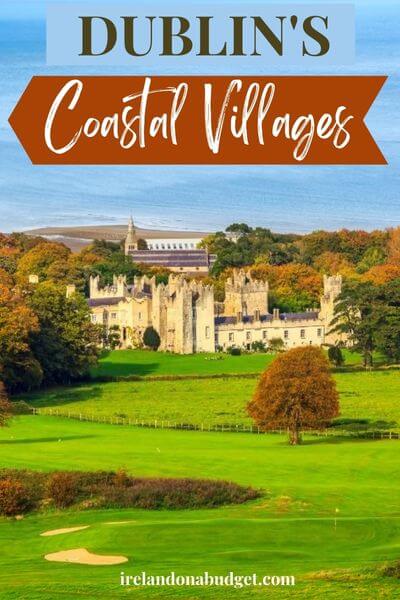 This page contains affiliate links and I may earn compensation when you click on the links at no additional cost to you.
This page contains affiliate links and I may earn compensation when you click on the links at no additional cost to you.
The most popular of its coastal towns include Dalkey, Dun Laoghaire (pronounced “Done Leery”), Howth, Killiney, and Malahide.
You can get to them easily by taking the DART, Dublin's electric rail system.
You'll see the various routes in green below.
Tickets must be purchased prior to travel, either from specific booking offices or vending machines at stations.
If you intend to travel around Dublin via public transportation, you should purchase a LEAP Visitor Card, which is essentially a smartcard that pays for journeys on all Luas and Dublin Bus services, all DART trains and other Dublin commuter services, as well as some Bus Éireann bus lines and Wexford Bus services.
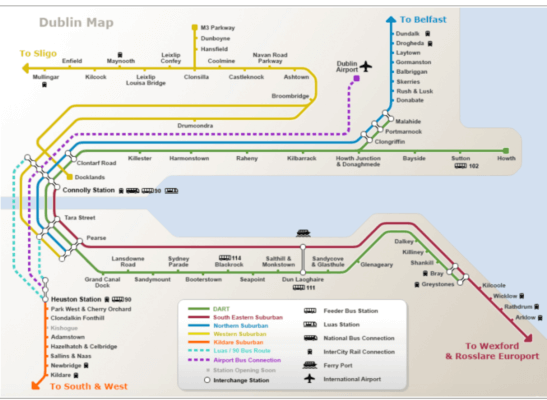
Dalkey
Dalkey is one of the more affluent of Dublin’s seaside towns and villages, home to celebrities like Bono, Enya, Van Morrison, and Irish writer Maeve Binchy.
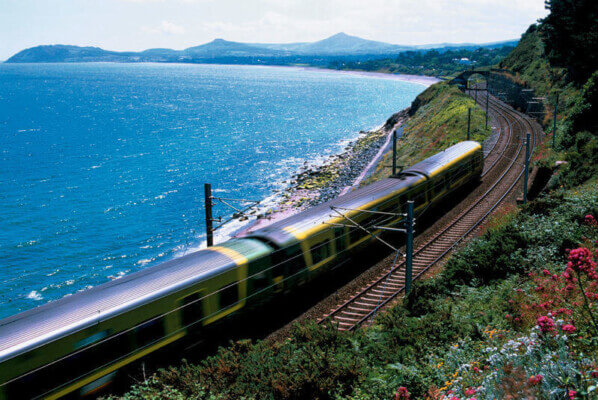
History of Dalkey
Dalkey was established as a Viking port and was very active economically during the Middle Ages.
It served as the main port leading into Dublin as Dublin City’s port was not adequate enough at the time.
The town had seven castles, but only two remain today.
They include Dalkey Castle (once known as Goats Castle), and another, which is now a private residence.
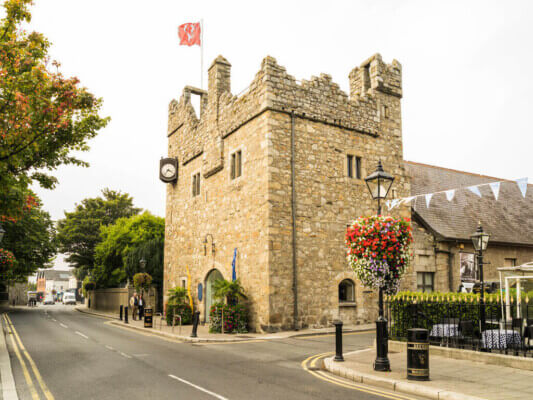
Most were the homes and storehouses of the wealthy merchants who landed at the port.
At one time, the English kings even imported their wines through Dalkey.
However, by the 17th century, Dalkey had lost its importance as a port town as the city of Dublin became more accessible to merchants.
What to See and Do in Dalkey
Be sure to take a tour of the Dalkey Castle & Heritage Center, especially its Living History Tour, which is led by costumed actors.
It will give you a fascinating insight into life in Dalkey during the Middle Ages.
Other attractions include the 10th-century St. Begnet’s Church and cemetery, which is located near the heritage center.
The church is named after St. Begnet, considered the patron saint of Dalkey.
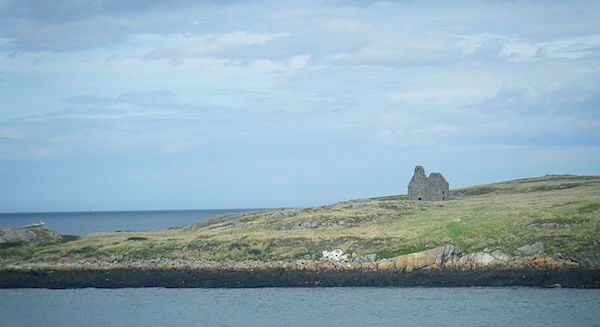
In fact, there are two ruined churches named for St. Begnet.
The other one is located on Dalkey Island.
The Writers Gallery is an important part of the center, giving visitors an insight into the writings of Ireland’s most famous authors, including Samuel Beckett, James Joyce, and Maeve Binchy.
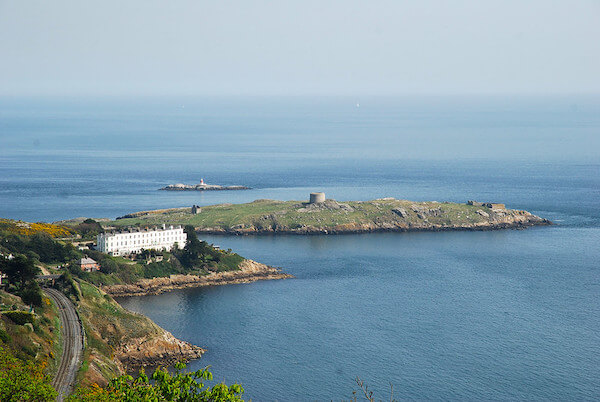
No visit to Dalkey would be complete without visiting Dalkey Island, which can be reached by boat at Coliemore Harbor.
Ken the Ferryman, a native of Dalkey, runs the daily service from April through October (10 a.m. to 6 p.m.). The adult fare is €10. For all others, the fare is €5.
The uninhabited island is the largest of a small group of islands in the area. It is home to lots of wildlife, including seals, birds, and wild goats.
Dolphins can also be spotted in the surrounding waters.
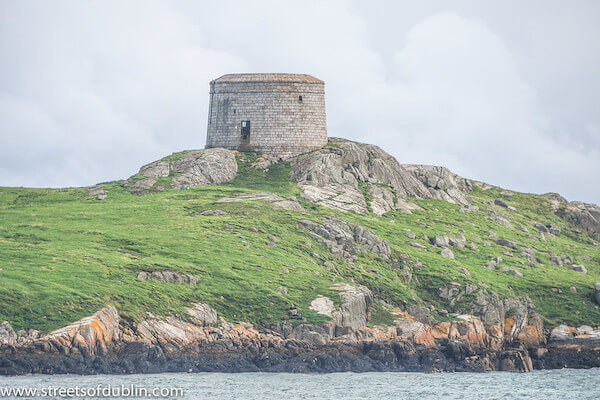
There is a lot of history to be found here, including the remains of a Martello Tower, one of several built by the British in Ireland during the 19th century as a defense against the French.
See Dublin's Attractions for Less with The Go City Pass
Where to Eat
Dalkey has several restaurants to choose from.
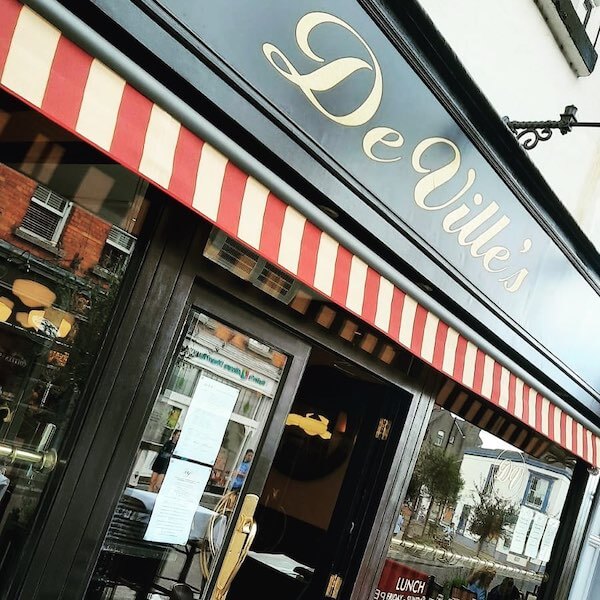
Some of the more popular ones include Finnegan’s and DeVille’s, the winner of TripAdvisor’s Certificate of Excellence 2015-2019.
Check out the reviews here.
If you’re in the mood for a sumptuous Irish breakfast or just a cup of tea and a scone, stop at the Country Bake for some home-cooked deliciousness.
Dun Laoghaire
A seven-minute drive north of Dalkey is the port town of Dun Laoghaire, which was for years the departure and entry point for many emigrants who left Ireland in search of work in England.
You can still travel to England by ferry from Dun Laoghaire.
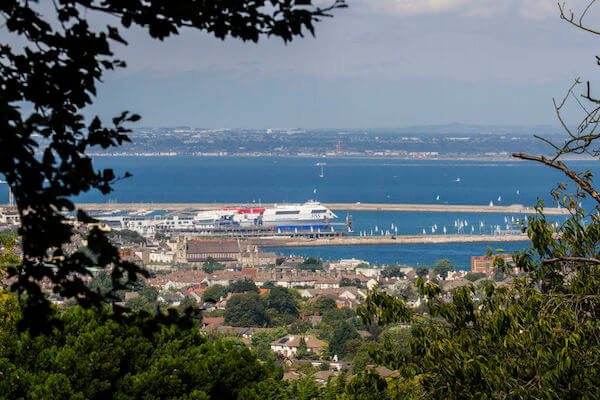
Formerly known as Kingstown, it was a popular seaside resort during the Victorian era.
Its well-preserved bandstand is a throwback to that time in history.
Read More: Dublin's Coastal Trail: New Experience for Visitors
History of Dun Laoghaire
The town was once the home of the 5th-century High King of Ireland, Laoghaire MacNeill, who used it as a base from which to carry out raids on Britain and parts of western and northern Europe.

There was no real town center until the 1800s, however.
The country’s first railway line from Dublin to Dun Laoghaire (Kingstown) opened in 1834, making it an established suburb of the city and a popular Victorian seaside resort.
What to See and Do in Dun Laoghaire
There’s plenty to do in Dun Laoghaire, another one of Dublin's seaside towns and villages.
Many people like to walk the town’s mile-long East Pier Walk or stroll through the People’s Park, a formal Victorian garden with a beautiful fountain as its focal point.
On Sundays throughout the year, you’ll find a food and craft market in the park.
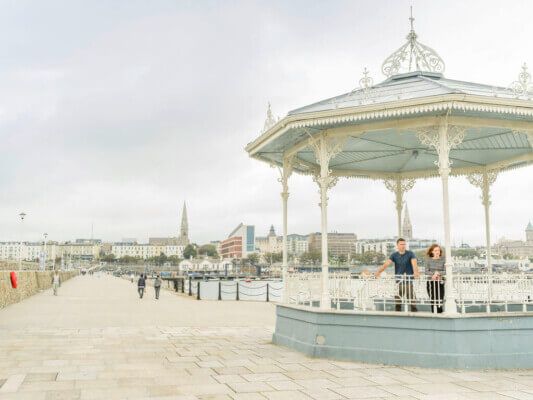
The National Maritime Museum of Ireland is a fun place to visit.
Housed in Dun Laoghaire’s 180-year-old Mariners Church, it contains some interesting artifacts.
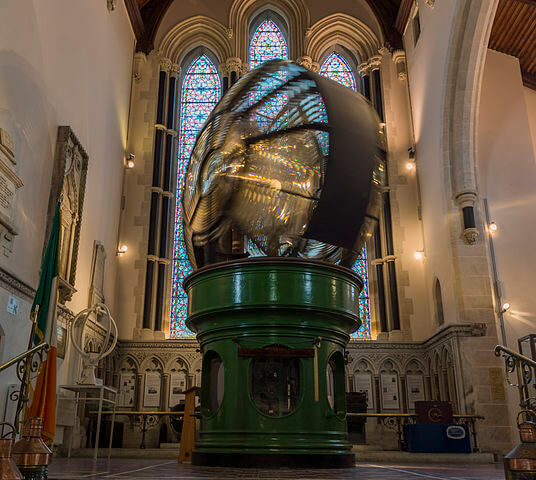
They include the 10-ton revolving Baily optic immortalized in James Joyce’s “Ulysses,” which was taken from the Bailey lighthouse a short distance away; a Titanic exhibit; a recreated radio room; a replica of the Royal Navy prisoner docks, and much more.
The James Joyce Tower and Museum, mentioned in the opening scenes of Joyce’s Ulysses, is also of special interest to those who love Joyce’s works.
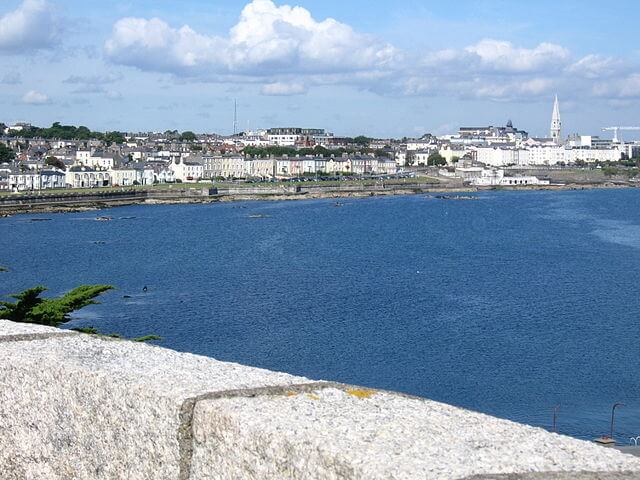
Eytan6 – Own work, CC BY-SA 3.0, https://commons.wikimedia.org/w/index.php?curid=23671712
While technically located in Sandycove, the museum is only a 20-minute walk from Dun Laoghaire.
It is free to visit.
If you want to spend some time exploring the town center, there’s no shortage of gift shops to explore.
Where to Eat
Bits and Pieces is an affordable Italian restaurant in the heart of the town.
It serves up delicious pizza and other Italian-style meals. There’s an awesome specials menu offering guests two courses for €19.70 or three courses for €23.90.
If you’re looking for something a bit more formal, try Hartley’s located in the original ticket hall of the town’s Victorian railway station, known in the day as the Kingstown Station.
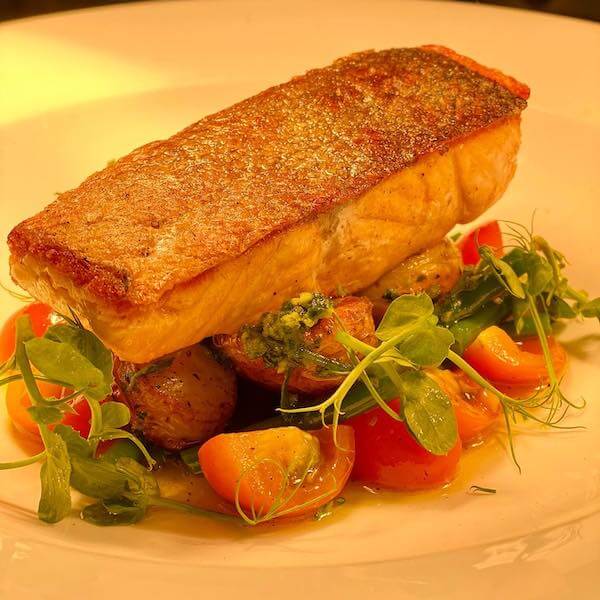
Enjoy a lazy lunch or an early evening dinner on the terrace.
Get Wifi While Traveling Around Ireland with Wifi Candy (use code IOB2024 to take 10% off)
Howth
Howth started out as a small rural fishing village east of central Dublin, but today it is a busy, affluent suburb of the city and another one of Dublin's seaside towns and villages.
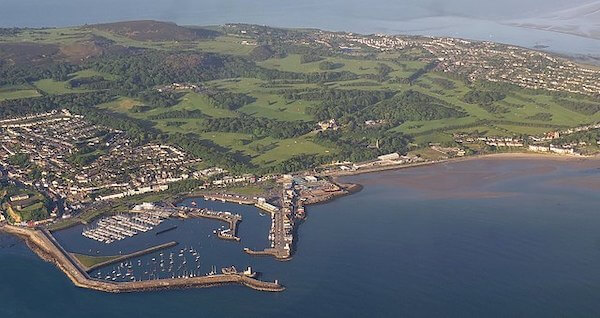
It is just under an hour’s journey north by train from Dublin city center.
The History of Howth
After the High King of Ireland, Brian Boru, defeated the Norse in 1014, many of them fled to Howth and stayed there until the middle of the 11th century.
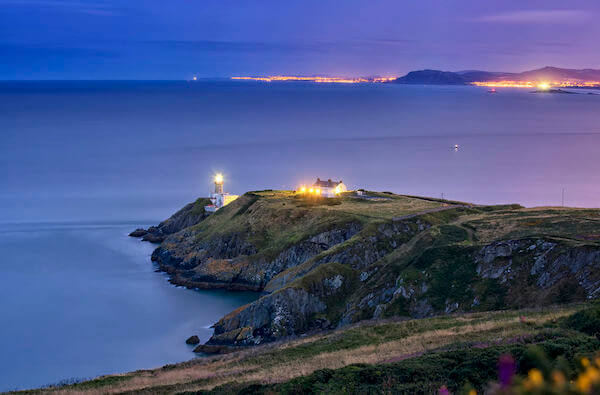
Howth remained under the control of the Irish and the local Norse forces until the invasion by the Anglo-Normans in 1169.
Howth was a trading port from at least the 14th century, although the harbor you see today was not built until the early 19th century.
Take the Dublin: Full-Day Howth and Malahide Castle Tour
What to See and Do in Howth
While the interior of Howth Castle is not open to the public, it is free to explore the grounds of this 16th-century building.
The gardens are known for their rhododendrons, which bloom in May and June, as well as azaleas and a long, 32-foot beech hedge planted in 1710.
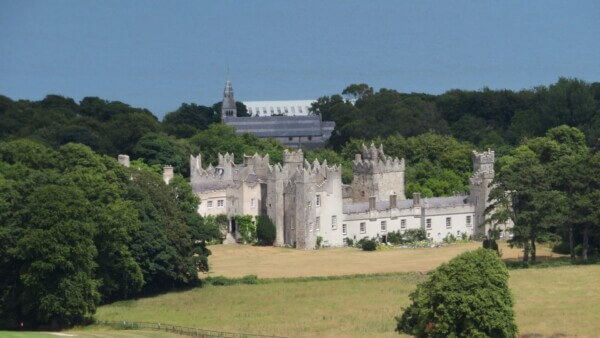
The estate was first acquired in 1177 by the Norman noble Sir Almeric Tristram, who changed his name to St. Lawrence.
The castle, up until 2019, had been in the hands of the St. Lawrence family ever since. The investment company that purchased it plans to turn it into a luxury castle-hotel.
In addition to its gardens, you'll also find the ruins of Corr Castle, also built in the 16th-century, as well as a dolmen called “Aideen’s Grave,” a huge megalithic monument.
According to local legend, it is the burial place of Aideen, the daughter of the ruler of Howth.
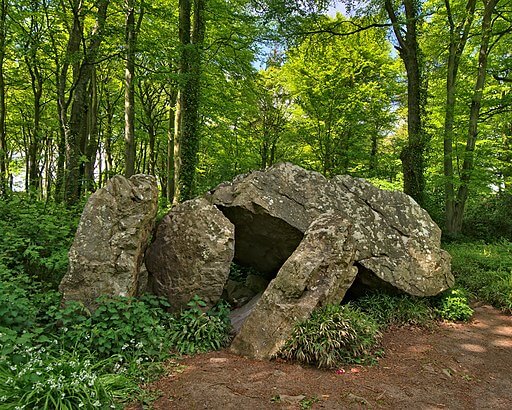
Aideen was married to Oscar, a grandson of Finn McCool of the Fianna. When Oscar died in a battle, Aideen was heartbroken and died soon after. The Fianna constructed the tomb where she now rests.
The capstone alone weighs 75 tons and is considered the second-largest portal tomb in Ireland after Browne's Hill dolmen in County Carlow.
It is located behind the Deer Park Hotel (which was demolished in preparation for the construction of a new hotel) on the grounds of Howth Castle.
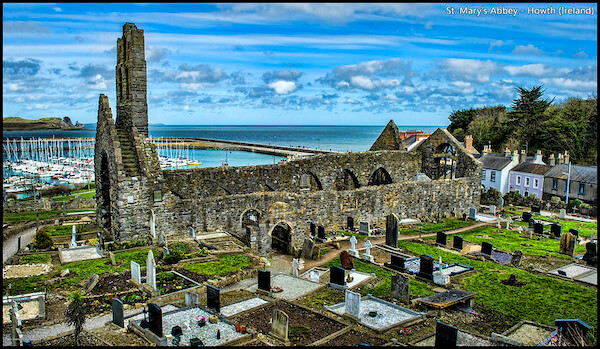
You’ll also find St. Mary’s Abbey, originally established by the Viking King Sitric in 1042. It is free to visit as well.
The National Transport Museum of Ireland is also housed on the grounds of the castle.
The museum was opened in 1986.
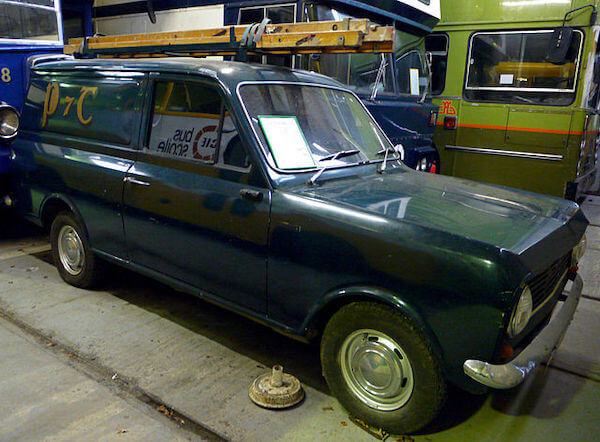
Its collection includes three Dublin trams, a number of old Dublin buses, and other vehicles.
If you like vintage vehicles, then this museum is worth a look.
There are some excellent walks to take in Howth.
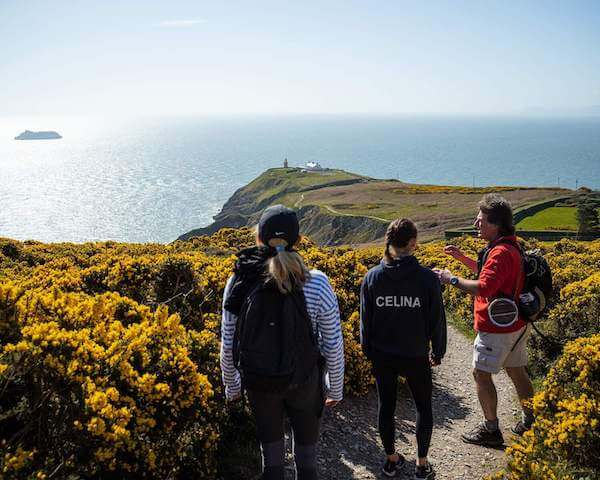
They include the Howth Coastal Walk, a 4-hour trek of the area courtesy of experienced guides from Shane’s Howth Adventures.
Be sure to check out the 80 positive reviews that TripAdvisor fans have given this attraction.
You’ll get magnificent views of Lambay Island and Ireland’s Eye, as well as Dublin Bay.
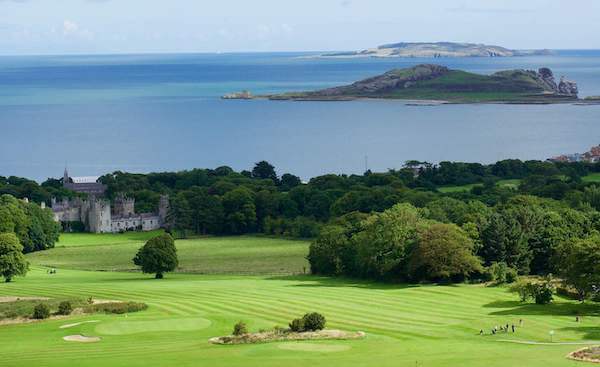
Compare Car Rental Rates in Ireland with Discover Cars
Where to Eat
When in Howth, you must visit Beshoff Bros. Fish and Chips.
Established in 1913 by Ivan Beshoff, a Russian immigrant, the family-run business is known for its quality fish.
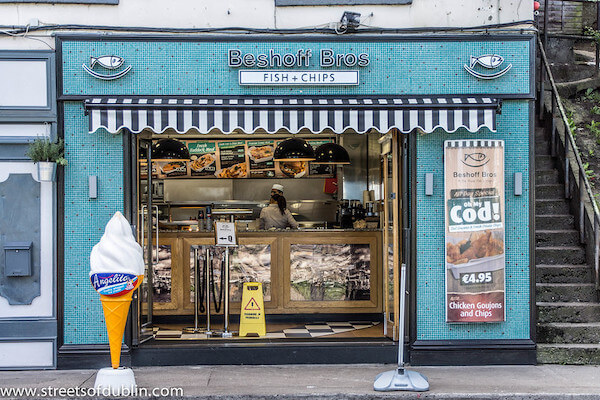
It is still baked in a secret batter that has stood the test of time. Delicious hand-cut potato fries (chips) are as popular as the fish.
The Bloody Stream is another great pick if you’re in Howth for the day.
There’s a real old-fashioned feel to the place that includes an open turf fire in the colder months, classic signage on the walls, and other interesting memorabilia.
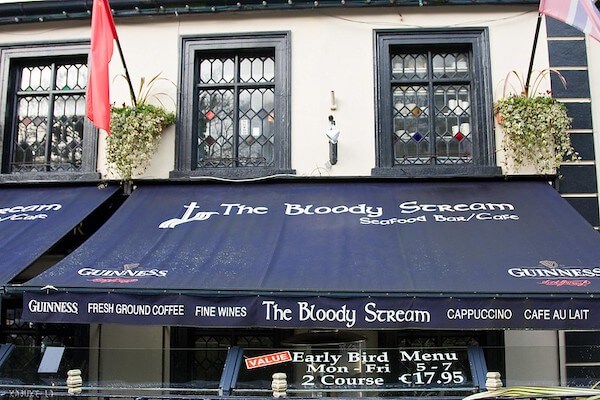
You can sit outside if the weather is good.
An early-bird menu, available from 2 p.m. to 9 p.m. Monday through Friday, includes two courses for €19.95 and three courses for €22.95.
Great food, live music, and a late-night bar make this a popular spot for tourists. See the reviews on TripAdvisor here.
Killiney
Killiney is another affluent suburb and part of Dublin's seaside towns and villages.
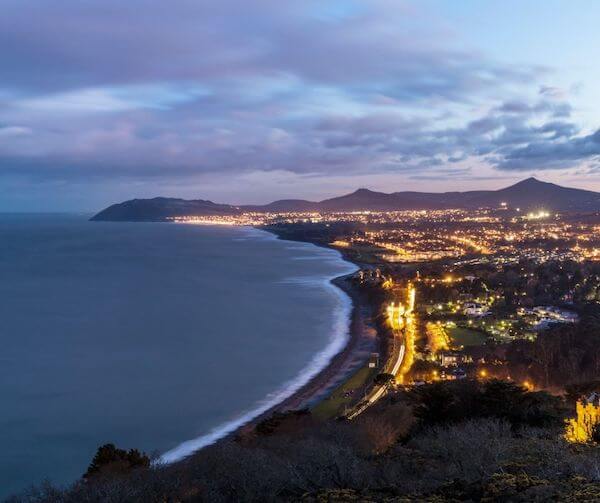
It is just south of Dalkey.
The History of Killiney
The village grew around the 11th-century Killiney Church, where a 6th-century monastery once stood.
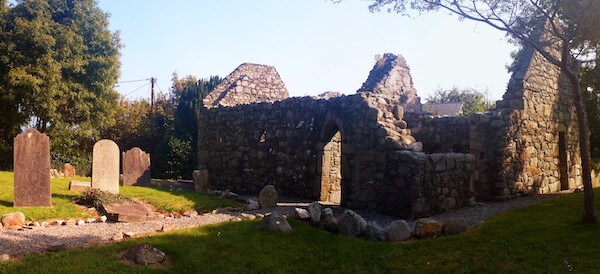
The name of the site was called the “Church of the Daughters of Léinín,” referring to Léinín’s seven daughters.
Killiney actually gets its name from the local chieftain. In Gaelic, it was known as “Cill Iníon Léinín.”
By the 19th century, it had become a popular seaside resort.
What to See and Do
Killiney Hill Park is a small public park that overlooks both the village of Killiney and the neighboring town of Dalkey.
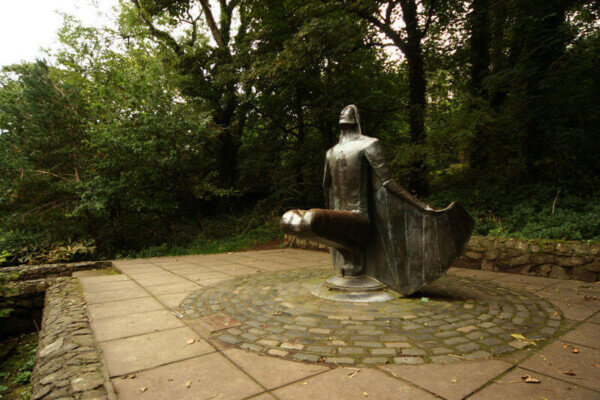
It was dedicated for public use in 1887 by Prince Albert Victor of Wales in memory of Queen Victoria’s Jubilee. At the time, it was called Victoria Hill.
The area is popular with walkers and hikers.
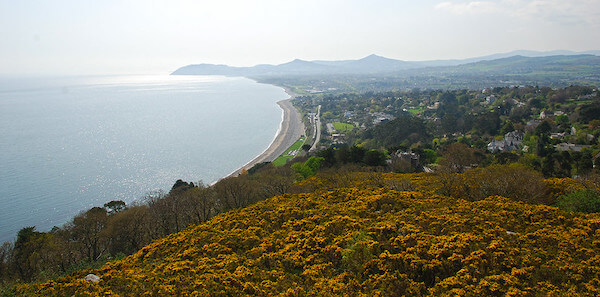
There are spectacular views from the top, where you can see the city of Dublin and the Irish Sea, Bray Head, and the Wicklow Mountains to the south.
You can even see Wales on a clear day.
A popular spot to stop along the way is the Tower Tea Rooms, where you can grab a coffee or tea, bagels, wraps, and more.
Where to Eat
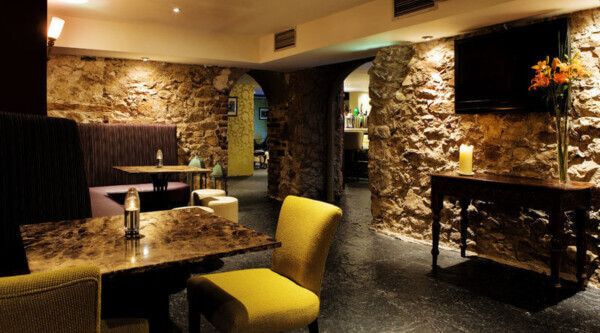
The Fitzpatrick Castle Hotel overlooking Dublin Bay is a good choice at any time of day for a bite.
Fancy an afternoon tea after your walk? You may also be interested in the hotel’s set menu from the Mapas Restaurant.
You can get two courses for €24 and three courses for €29, from Sunday through Thursday all evening, and on Friday and Saturday from 5:30 p.m. to 7 p.m.
Malahide
The pretty coastal village of Malahide is about 10 miles away from Dublin’s center.
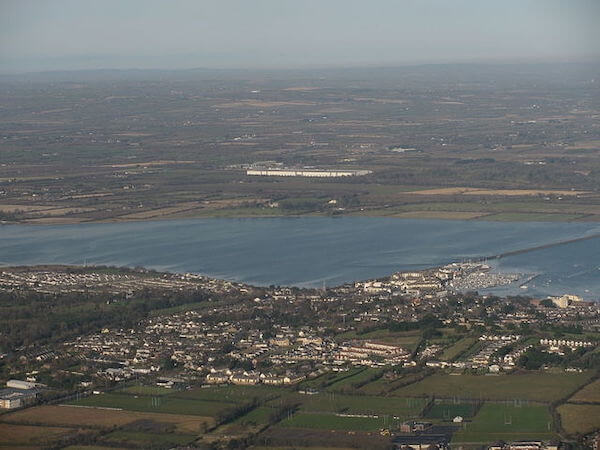
The DART will also take you to Malahide but remember to switch at the Howth Junction station.
The History of Malahide
While the Vikings landed here in 795, it was the Anglo-Normans who established the town.
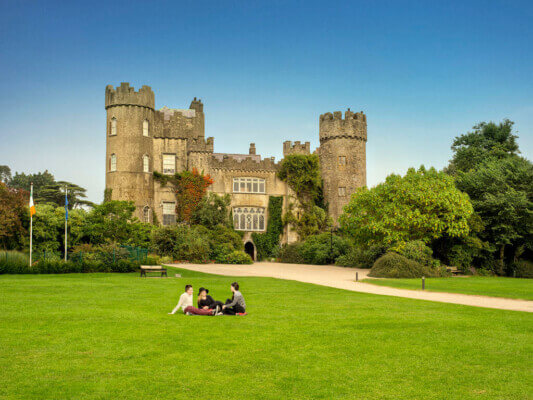
From around 1180, the history of Malahide is connected to the Talbot family of Malahide Castle.
Richard Talbot, a knight, was granted the land in the area and developed it extensively.
Over the centuries, Malahide became known for salt harvesting. Its harbor was a busy place taking in coal and construction materials.
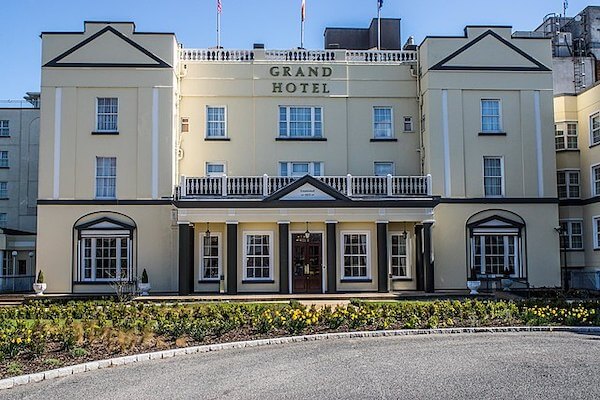
By the early 19th century, it had become a popular resort for wealthy Dubliners.
You’ll see evidence of this in the beautiful Georgian homes in the town and along the seafront.
What to See and Do
Malahide is a busy town, with lots of shops, pubs, and restaurants.
The main tourist attraction is Malahide Castle, a 12th-century building with over 260 acres of parkland.
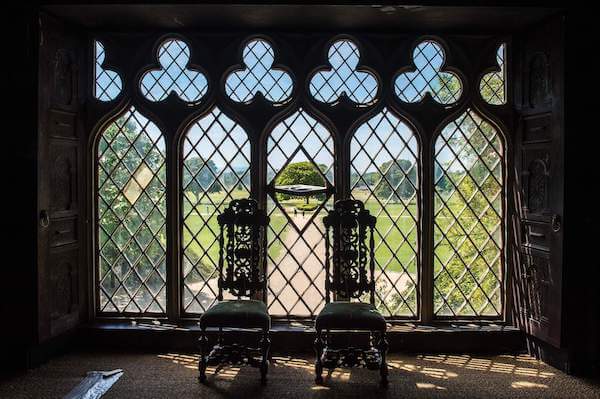
The Talbot family lived in the castle from about 1185 to the 1970s, except for a brief period in the 17th century when Cromwellian soldiers seized the land surrounding the castle.
The building at the time was occupied by Myles Corbet, the Lord Chief Baron of Ireland.
The estate was sold to the Irish government in 1975.
It has since been used as a place to host international leaders and others.
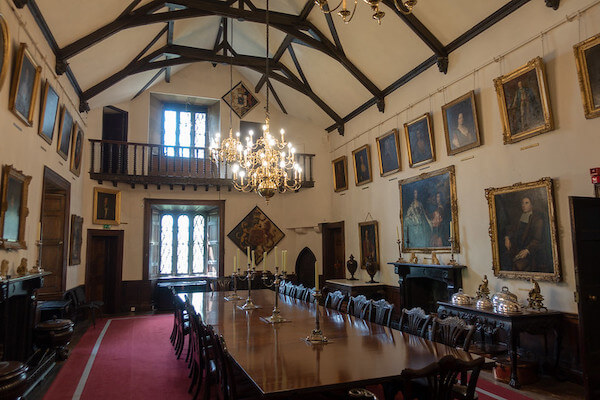
A guided tour will take you on a journey throughout the castle, where you'll see its private rooms, along with the furniture and art collections that belonged to the Talbot family.

The gardens and Butterfly House contain 5,000 different types of plants, and the Fairy Trail will delight the youngest of visitors.
Where to Eat
Like Dublin's seaside towns and villages mentioned above, Malahide has its fair share of restaurants, too.
The Greedy Goose, perched close to the marina, is a must if seafood is what you crave.
The restaurant has an early bird special.
For three courses, you will pay €25.95 and for four courses, you’ll pay €30.95.
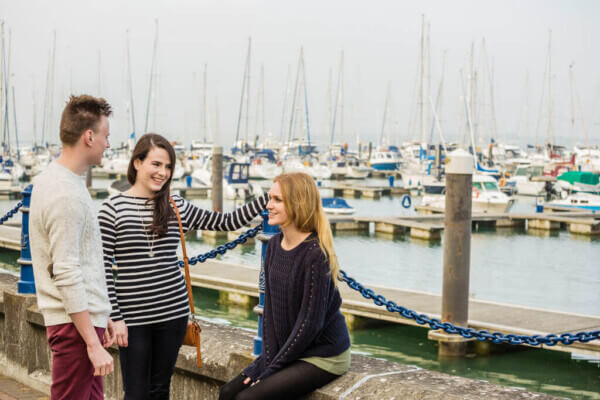
Reviews of the restaurant, which has won the TripAdvisor Certification of Excellence for the past four years, can be found here.
If you want to experience Malahide’s favorite local spot, pay a visit to Gibney’s.
You’ll get excellent pub grub as well as a few pints, or whatever your favorite alcoholic beverage might be.
